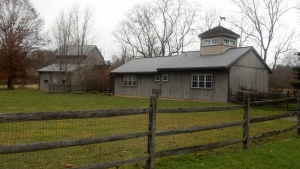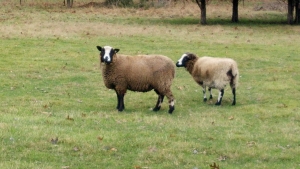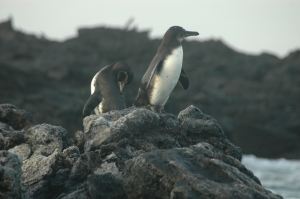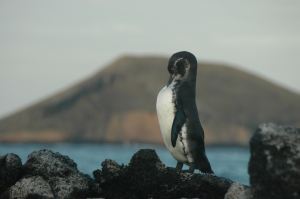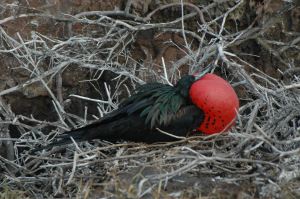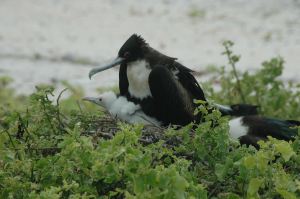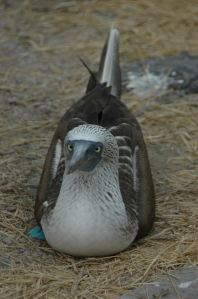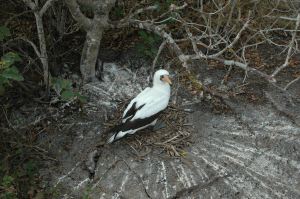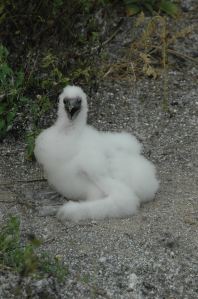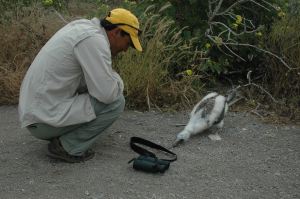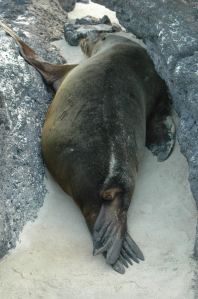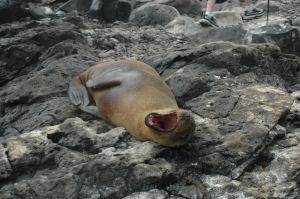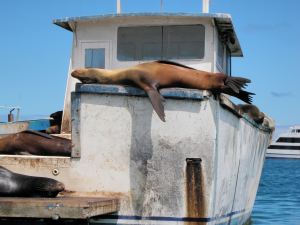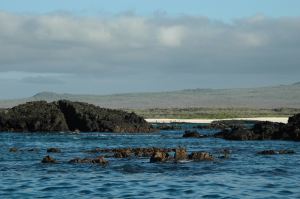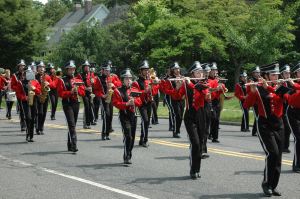Blog
The curative power of sheep
Handsome Husband and I had planned a romantic escape to a picturesque country inn in Stockton, NJ last week. The Woolverton Inn was built in Colonial times and is absolutely delightful as you can see in this photo:
Our room was in this charming little cottage (the one on the right):
It even had a jacuzzi:
However, two factors interfered with our romance:
1) It poured rain almost the entire time we were there, which could still have worked (a jacuzzi and a four-poster bed!). However,
2) I had a terrible sinus infection so my mood was about as far from romantic as it could get.
But there was this lovely window seat where I could curl up and read:
I didn’t have to feel guilty that I wasn’t doing the laundry or walking the dogs or taking care of the thousand other things one needs to do when one is at home. And in the little field right outside the window were…
…sheep.
Maybe it’s because I grew up in the country , but I found watching the silly, fluffy creatures wandering around their pasture incredibly relaxing. I could gaze at them for long stretches of time without getting bored. When I’d been away from the window for a while, I would go back and check to see where they had wandered in my absence. I found all my frustration at being sick just floating away.
In fact, by the last day of our stay, I felt well enough to take a stroll along the tow path and enjoy the beauty of the Delaware River (when the rain stopped for awhile).
Some people might give the credit to antibiotics, but I firmly believe the sheep cured me.
Galapagos, Part 6: Penguins!
My friend Elsie calls me the Penguin Lady. I think penguins are cool, so you can imagine the thrill when I found out that we had a chance of seeing the very rare and endangered Galapagos penguin. It’s the smallest species of penguin in the world, as well as the only one who lives north of the equator (by only a few miles, but still…). So it’s not surprising that they are considered quite the celebrities, as you can tell by the paparazzi in this photo:
We were out snorkeling when we came upon penguins roosting on the rocks (where they nest in burrows and crevices). There was lots of picture-taking.
See the white line curving around this fellow’s face? That’s characteristic of the Galapagos penguin. They stand only 19 inches tall and weigh about five pounds.
While kayaking later in the day, we found a couple of more penguins, posing nicely on the rocks.
This little fellow below must be immature because he lacked the white line on the face:
There are less than 1,000 of the Gaalpagos penguins now, due to El Nino warming the waters around the Galapagos. The penguins count on the cold Humboldt Current to bring the fish they eat past the islands and food has been scarce. Evidently, it’s quite possible they will disappear all together in the future. Such a very sad thought.
Finally, the absolute best experience: we were all suited up for snorkeling off the beach when we asked our fabulous (and energetic) guide Fausto if there was any chance of swimming with the penguins. He thought about it for a minute, then said, “Let’s try it. Everyone who wants to swim with penguins, jump in the Zodiac.” Our Zodiac pilot turned out to be an excellent penguin spotter. He observed a flock of penguins feeding farther along the coast, and we headed after them.
We discovered that penguins move very, very fast in the water. It took three tries (12 snorkelers jumping into the water, then clambering back into the Zodiac again) to get in position in front of the penguins. But when we did: unbelievable!
We dropped into an empty stretch of water, and followed Fausto along the coast. Suddenly, out of nowhere dozens of penguins came shooting through the water toward us, swirling all around us as they nabbed the silvery fish fleeing in front of them. The penguins paid no attention to us, bobbing to the surface to breathe right alongside us snorkelers.
I wish I could have caught an underwater shot but my camera’s slow shutter had no chance of capturing the speedy creatures. I swear they are jet-propelled.
One of the things I noticed when a penguin bobbed up right beside me was that their feet look padded and kind of squishy. I hope you can see how thick they are in this shot.
It was just another magical moment in the Galapagos tradition.
Galapagos, Part 5: Dinosaurs with shells
I’ve had a request for a post on the Giant Tortoises of the Galapagos. Linda, this one’s for you!
Galapagos actually means tortoises so these big fellows are responsible for the very name of the islands they live on. And they are indeed big, weighing in at up to about 880 lbs. with shells nearly 6 feet in length. They often live over 100 years. To me, they looked liked dinosaurs with shells.
Doesn’t he remind you of a brontosaurus?
The Charles Darwin Research Station on Santa Cruz has a very successful breeding program which has repopulated most of the islands with the seven surviving subspecies of tortoises. Here are some of the young ‘uns waiting to be released into the wild.
The Galapagos tortoises nearly went extinct because us humans took advantage of their lack of fear and their slow speeds to use them for food supplies on ships. The tortoises could live a year without food or water so they remained fresh and ready to eat. Not a pretty thought about how we treat our fellow creatures.
The breeding programs have been very successful, except for poor Lonesome George, the last of his subspecies.
He looks very sad, doesn’t he? However, the truth is that he now shares his pen with four lusty females whose DNA is very similar to his, so they are hoping he will pass it along to some offspring soon. Of course, he will still be the last pure-blood of his kind.
You will probably be able to figure out what this fellow is up to.
We could hear him long before he saw him. Evidently, tortoises are almost entirely mute except for when they mate. Then the male is quite vocal, emitting loud grunting noises. The sound of the two shells pounding together is pretty impressive too.
Aside from the Charles Darwin Research Station, the giant tortoises wander about in the wild. Here’s one fellow just hanging out in a meadow with an admiring audience.
I was quite surprised to discover that they graze just like a horse or cow, ripping up the grass with their mouths.
We came upon this big guy in the woods.
When all that bulk moves through the trees, it sounds like a bit like an elephant as branches crack and bushes get crushed beneath the tortoise’s great weight.
Their shells come in all sorts of different shapes, although the two major divisions are saddleback and domed. However, there are many variations in between. Here are a few samples.
Finally, here’s my favorite tort, giving me the evil eye.
Not cute and cuddly like the sea lions, but quite impressive for their sheer mass.
Galapagos, Part 4: Not magnificent, just great
Another bird who has always fascinated me is the frigatebird, especially the magnificent frigatebird. What a name! And what a fabulous red balloon the males use for mating! I’ve seen frigatebirds high in the sky before but have never seen the male with pouch fully inflated. However, as you remember from my previous post, it was mating season in the Galapagos, so my lack was soon remedied:
That’s a male frigatebird with his “gular pouch” fully inflated with air. He sits on the nest site he’s claimed and calls to females, hoping to lure one down to become his bride. Evidently, the red balloon attracts the females’ attention but the nest situation can be the deciding factor for choosing their mate. What do you think of this fellow’s choice of locale?
Once the female makes her choice, she joins the male on the nest, and he often drapes his wing over her. So sweet and romantic, or maybe he’s just hanging on to his babe.
My one disappointment? These frigatebirds were not magnificent, they were merely great. Magnificent frigatebirds have purple irridescence on their feathers while great frigatebirds have green as you can see on this handsome fellow:
Frigatebird moms are quite devoted, caring for their babies for eleven months, the longest parenthood for any bird species. For that reason, they only lay one egg every other breeding season . Here’s one mom with her pride and joy:
A less admirable trait of the frigatebird is–wait for it!–kleptoparasitism. Cool new word that our guide taught us! What does it mean? They steal stuff from other birds, especially the poor boobies. In the photo below, the frigatebird wanted the piece of nesting material the booby had found, but they will also steal food.
That’s why they are also sometimes called “pirate birds”. Tsk, tsk!
My father was in the Navy in World War II, and he told me that frigatebirds were often mistaken for airplanes when they were high in the sky. You can see in this photo why that might happen.
The frigatebirds have enormous wingspans–between 80 and 90 inches–especially compared to their body size, so they can stay in the air for as long as a week.
So while they might not be magnificent, these great frigatebirds were pretty darn interesting.
Galapagos, Part 3: Boobies (minds out of the gutter, please!)
I don’t know why but the reason I first wanted to visit the Galapagos Islands was to see blue-footed boobies. They just seemed so whimsical, with their brilliant blue feet, silly faces, and odd mating dance. Not only did I get to see them, I got to see them dance! We were lucky enough to arrive right in the midst of mating season, so all the birds were displaying for their mates.
The folks who live on the Galapagos are well aware of the double entendre of their most famous birds. Tee shirts like this one abound:
The birds were named by the Spanish. Because they are kind of goofy, they called them “bobos” or clowns. The British, in their usual fashion, corrupted the foreign word to boobies.
Here’s my favorite blue-footed booby, who looks a bit clown-like head on. See the blue foot peeking out from under him/her?
Here are a couple of blue-footed boobies mid-mating dance:
And here are those unbelievably blue feet:
What I didn’t know is that there are other kinds of boobies too. Here’s a red-footed booby:

Of course, he could just as easily be called a blue-beaked booby which would be nice alliteration. (Obviously whoever named the subspecies of boobies had no appreciation for the finer style points of the English language.)
Finally, here’s a Nazca booby standing on his/her nest (such as it is–they’re not much into nest-building, as you can see):
You see those snazzy white lines radiating out like rays from the sun? I was wondering how and why the birds drew them around their nests (to attract a mate? to stake out territory? to give the young directions?) when our guide explained that it’s Nazca booby poop; the nest sitter rotates its orientation on the nest so the poop gets ejected in different directions, causing the “artwork”. Another illusion shattered.
After all that sitting and pooping, this is what hatches from a Nazca booby egg:
Only a mother could love this one, right? However, they’re surprisingly endearing critters and endlessly curious. The booby baby below wanted to taste our guide’s binoculars:
It was another delightful moment in our interaction with the local wildlife. The baby boobies thought we were just as interesting as we thought they were. Everyone was happy.
Galapagos, Part 2: Sea lions
If truth be told, my favorite critters in the Galapagos were not the blue-footed boobies or the great frigatebirds, as cool as they were. Nope, it was the totally unexotic sea lions because they were cute and highly entertaining. And our presence didn’t bother them at all, as you can see below.
Contrary to all appearances, that sea lion is not dead, he’s just resting, which is what sea lions spend most of their time on land doing, as demonstrated by the following photos:
In the water, however, the sea lions are all speed and sleekness. The young fellow below and two of his friends decided my Darling Daughter and I made good playmates when we were snorkeling one day. He would come and float right in front of me, staring at my snorkel mask which fascinated him for some reason.
Then he would go zipping away, moving so fast I couldn’t keep him in the camera frame.
When Darling Daughter would dive down under the water, the young sea lions would follow her and swim spirals around her, probably making fun of her for being so slow in the water. She thought it was great, of course!
I fell in love with this little fellow on the beach.
How cute is he?! I wanted to take him home with me.
At a fish market on Santa Cruz, we encountered a sea lion who we decided shares DNA with our Golden Retriever Brodie.
The sea lion has one advantage over our dog: he doesn’t shed all over you when he’s begging.
Galapagos Islands, Part 1: Where exactly are they?
At last, my long-promised photos of the Galapagos Islands! I thought you’d like to know a little bit about the logistics of the trip since I was a little vague on where exactly the Galapagos Islands were when we signed up for this expedition.
So, we flew from New Jersey to Miami (three hours) and then from Miami to Guayaquil on mainland Ecuador (about four hours). Here’s the view from our hotel room at the Hilton Colon in Guayaquil:
We spent the night in the hotel, where they advised us not to walk outside alone and to only take taxis the hotel called for us. Darling Daughter and I chose to remain inside, taking advantage of the pool and the five restaurants. Not too painful. BTW, that big white building in the middle of the photo is a Mormon church. Who’d a thunk?
The next morning they dragged us out of our comfy beds at the crack of dawn to take the last leg of our airplane journey, a one-and-a-half-hour flight to San Cristobal in the Galapagos on this very new and handsome plane:

A short bus ride took us to the dock where we met our official greeting committee:
They look really excited to see us, don’t they? We came to truly love the sea lions, who treated us humans like just any another critters. Sometimes they played with us, sometimes we irritated them by shooing them off the paths or steps we needed to use, but mostly they just ignored us and kept on sleeping.
This was our first taste of the magic of the Galapagos: being looked on not as predators to be run from, but rather just as regular old mammals who shared their world…and who provided convenient benches to nap on.
From the dock they loaded us into the trusty rubber Zodiacs we would come to depend on for all transportation to and from the ship:
We learned the “Galapagos grip” for getting in and out of the bobbing Zodiacs: both hands free and grip forearm to forearm with the crew member helping you. Otherwise you’d go in the drink.
En route to the ship, we passed more sea lions taking advantage of human constructions:
Finally, we saw the National Geographic Endeavor, the ship that would be our home for the next seven days since most of the islands are totally uninhabited. Three hundred feet long, the Endeavor was built as a fishing trawler but refitted for passengers. She’s a lovely lady.
It was comforting to know that she had originally sailed in rough northern seas since we were six hundred miles out in the middle of the Pacific Ocean right on the equator.
Darling Daughter and I shared this cozy but well-equipped cabin. I love all the clever storage cubbies ships have, being a bit of an organization freak.
We had the obligatory “abandon ship” drill with the orange life jackets we came to hate since we had to wear them on every Zodiac ride. Then we set sail for Cerro Brujo…and got a little sea sick, if truth be told. Thank goodness for Bonine!
Here’s the beautiful beach where we made our first official landing.
And I saw–oh joy!–my first ever blue-footed booby, the reason I first became fascinated by the Galapagos Islands.
More photos to come…
The benefit of rain
Now that it finally has stopped raining for a few days, I can see the benefit of having a stormy spring: my flowers are blossoming like nobody’s business. They’re like me: so happy to see sunshine that they are exploding with joy.
Here’s my armillary backed by a profusion of mountain laurel blooms.
Here’s my garden path with honeysuckle bursting on the arbor.
I have clematis and roses climbing over rose pillars by my front door. Never before have so many blossoms covered them
My other arbor has two kinds of roses. One side is dancing with flowers; the other blooms later in the summer.
So maybe the rain wasn’t so bad after all. Don’t they say that every cloud has a silver lining? Well, my lining just happens to be floral.
Remember the names
You know me: I’m a big believer in Memorial Day. It used to be just a day off for a cookout. Now I find myself more and more thinking about what the holiday is really for: remembering the brave people who have given their lives in the service of their country. In my little town, the Memorial Day Parade kicks off the ceremonies with…
…old cars…
…Girls Scouts…
…and of course, my personal favorite, the marching band.
As a former band mom, I still tear up when they march past.
Then we all follow the parade down to the center of town where the war memorials stand. For 364 days a year, they are just part of the scenery: benches to sit on, walls for children to balance on, easily identifiable landmarks. Today though, the monuments are the focal point of our town.
Every year, our master of ceremonies reads every single name carved in the memorial stones. I’ve come to recognize them because until ten years ago, they were blessedly always the same. After 9/11, we had to add five more, not an addition anyone wanted to make.
Every year, the whole crowd stands utterly silent as the roll call takes place yet again. Two young scouts solemnly position a wreath for each war.
I don’t know any of the families whose children these were, but I have friends whose children are in the military right now. I have a son who is of an age to be drafted. Repeating these names year after year is important because we should never forget that our lives are the way they are because these young people were and are willing to sacrifice everything to make it so.
We should know their names, every one of them.
Adventures in England: Bath!
Jane Austen! Georgette Heyer! They started my love affair with the romance genre. So, of course, I love the city of Bath. It’s their territory.
Darling Daughter told me I simply must take the tower tour of Bath Abbey. So I did and got this very picturesque shot of the city. I’m making it full sized so you can see the details. Can’t you picture your favorite Regency heroine strolling these streets?
Another shot from the Abbey’s roof: the Roman Baths and the Pump Room, pretty much as they would have looked in Bath Tangle–or so I like to think.
Of course I had to drink the waters, just like Ms. Heyer’s characters. Honestly, the stuff is nasty: it’s warm and very mineral-laden. Ugh! At least, the water fountain’s pretty.
To make up for the yucky water, I had tea at the Royal Crescent Hotel, in my own private parlor, thank you very much! I think we should institute the custom of afternoon tea in the U.S.
And here’s the Royal Crescent from the outside. Yes, it was gray and rainy, but that’s what makes the grass so vividly green.
Now that the Royal Wedding hysteria has died down, I’m ready to get on Expedia and book my next trip to the British Isles.


